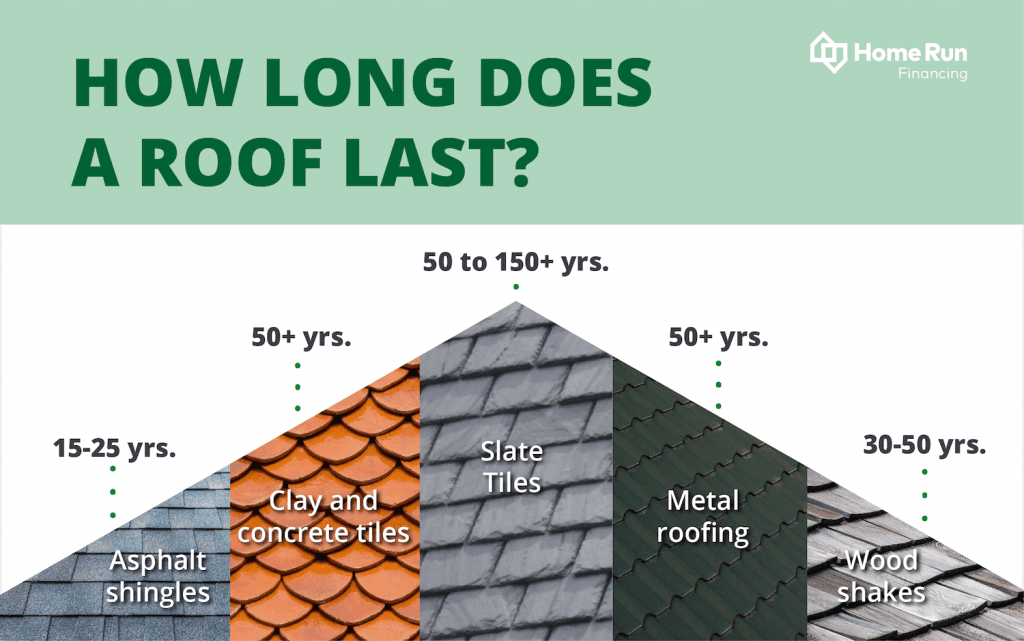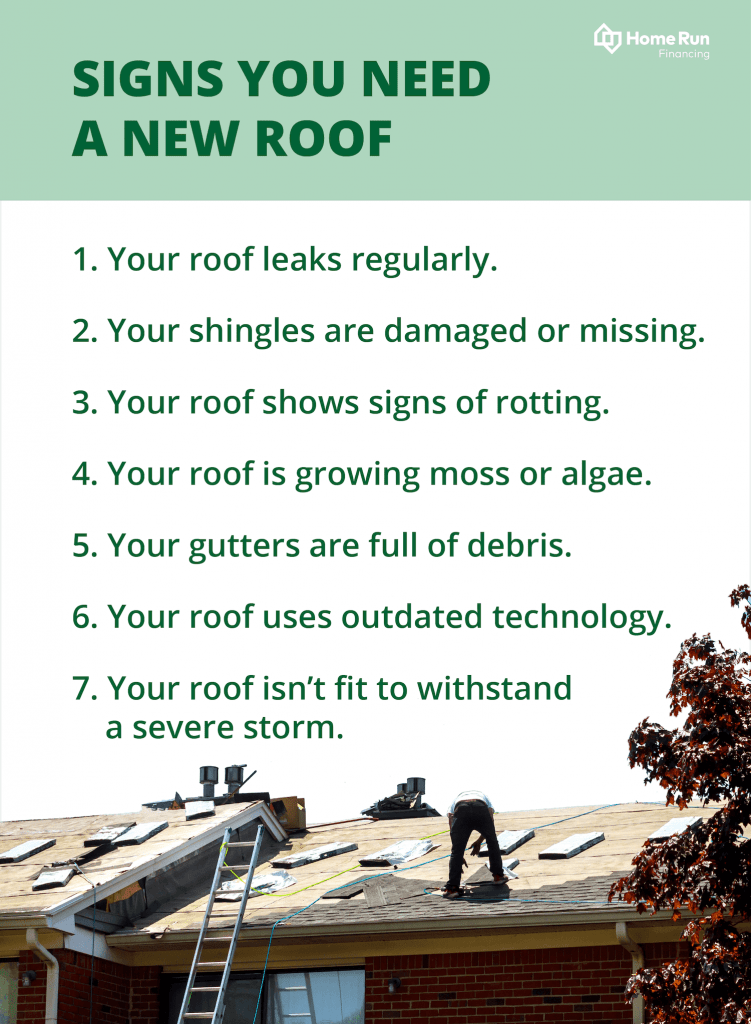
When to Replace Your Roof
Wondering when a roof needs to be replaced? Your home’s roof is essential to say the least. It protects you and your possessions from heat, sun, cold, wind, and rain. It guards you from pests and animals. It’s critical for a comfortable indoor environment. Ensuring that your roof is up to the job takes a bit of diligence, you need to know what your roof is made of, how long it lasts, and when it’s time to get a replacement.
How long does a roof last?
You must know your roof’s lifespan in order to plan ahead for a replacement.
Your roof can’t last forever, but maintenance and care will extend its life. You should keep it clean of debris, moss and fungi. Don’t remove protective coatings or loosen shingles. Keep your gutters clean, so water flows freely off your roof. Make sure your home is properly vented and insulated to avoid moisture and heat building up in the attic. Both of these factors rapidly age your roof and shorten its lifespan.
Factors that affect your roof’s lifespan
How much control do you have over your roof’s future? Some factors are out of your control. Keep the following considerations in mind while considering a roof replacement.

- Roofing materials. Building materials play a major role in your roof’s lifespan. Asphalt shingles, the most common roof material, can last 15 to 25 years. Roofs made of wood shingles or shakes tend to last 30 to 50 years. Metal roofs can withstand at least 50 years, as can clay and concrete tile roofs. Slate roofs, which last the longest, have been documented to be more than 100 years old.
- Roof design. Steepness and design complexities determine how well your roof sheds water and snow, along with how well it deflects heat and sunlight. All of these factors can age a roof.
- Ventilation and insulation. A poorly insulated roof over an attic will degrade quickly. Ventilation can keep temperatures even, preventing heat blistering in the summer and ice damming in the winter.
- Installation. Waterproofing gables and properly installing materials can make a huge difference in roof longevity. For example, loose shingles render your roof vulnerable to water damage.
- The level of maintenance your roof receives. Cleaning your roof and gutters, as well as addressing needed repairs, will extend your roof’s lifespan.
- Your local climate. The weather in your area will affect how often you should replace your roof. Hot sun rays can deteriorate the surface. Excessive moisture, ice and high winds can afflict structural damage, accelerating the need for a new roof.
7 signs you need to replace your roof
When your roof needs to be replaced, time is important. Delayed action increases the risk of damage, ultimately upping the costs. No matter how long your roof lasts, it isn’t eternal. These clues will help you know when it’s time to replace your roof.

1. Your roof leaks regularly.
Any roof leak, small or large, is a red flag. Along with water, other indicators of leakage are dark spots, musty odors and bubbling paint.
2. Your shingles are damaged or missing.
Beyond age, wind, ice, sunshine and scraping tree branches can wreak havoc on your roof. Animals have been known to chew their way into roofs. Look for:
- Cracks
- Curling
- Discoloration
- Loose or missing shingles
- Buckling and separating separating seams
3. Your roof shows signs of rotting.
A rotting roof risks collapse. Beyond property damage, this places residents at risk. Sagging rafters, mold growth, ice dams and leakage all indicate roof rot.
4. Your roof is growing moss or algae.
An accumulation of moisture and debris sets the stage for moss, algae and mold to build on your roof. These growths can further damage an already-failing roof. Cleaning microorganisms off your roof may not be enough. These conditions probably indicate time for a roof replacement.
5. Your gutters are full of debris.
Breaking down over time, asphalt shingles release granules and other gutter-clogging debris. Seeing pieces of roof washing down through the drainage system is a sure sign you need a new roof.
6. Your roof uses outdated technology.
Even commonly used asphalt shingles have evolved within the last 20 years. New asphalt roofs offer greater energy-efficiency, enhanced aesthetics, and improved durability. The energy savings of a new roof may significantly offset the cost.
You can buy asphalt shingles made with recycled material. You have choices in coolant roof technologies, which absorb and reflect sun energy. You can also find a variety of solar panel roofs. There are now green roofs made with plant-based, hyper-absorbent materials built to reduce run-off.
7. Your roof isn’t fit to withstand a severe storm.
If you’re in an area prone to natural disasters, a new roof might be essential for meeting enhanced building code rules and protection. Saving money with inexpensive asphalt shingles can rack up costs when your roof fails in a hurricane. Metal roofs are among the best types of hurricane-resistant roofing materials.
Covering the costs of your roof replacement
The cost of replacing a roof can be high depending on the size, style, location, and materials of your roof. A 1,000 square foot roof redone in asphalt shingles will come in around $3,500, whereas a 2,000 square foot roof in slate may top $44,000.
If you don’t have it in your budget, but see all the signs you need a new roof, there are inexpensive options. Consider borrowing against your home equity. Property assessed clean energy financing allows you to use money already invested in your home to make critical home improvements. PACE offers fast approval times, long repayment terms, and low-fixed rates. These are just two of Home Run Financing’s available services for roof repair projects.
If the time to replace your roof is right now, you can’t afford to wait. Get the money you need right away by applying now. Of course, if you have any questions, you can always contact us.
